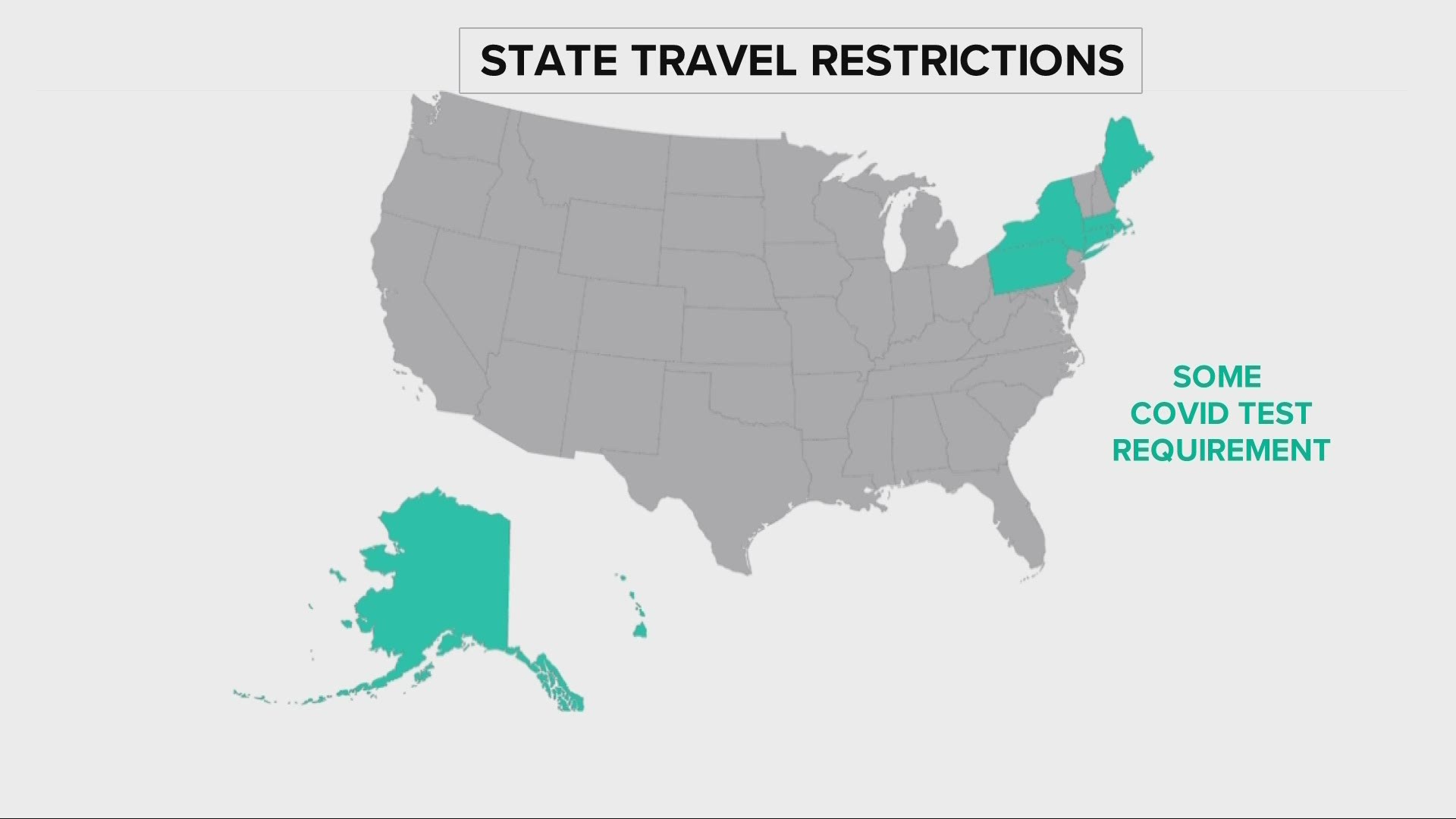CLEVELAND — The Ohio State University urged students on Monday to wait for a negative test for COVID-19 before leaving campus for Thanksgiving break, in order to prevent students from spreading coronavirus into their communities. The university is able to perform campus-wide testing of students, staff and faculty through federal funding.
But what are other Ohioans supposed to do if they'd like to be tested?
Unfortunately, Ohio does not currently have enough testing capability for all asymptomatic people who want a COVID-19 test. Right now, priority within the general public is given to those experiencing symptoms and those who are scheduled for medical procedures, according to Marlene Martin, spokesperson for the Summit Public Health Department. She said that people with symptoms are not having problems getting a coronavirus test from their doctor or through their county health department.
However, if you don't have symptoms, it's increasingly difficult to get tested now that COVID-19 cases are surging in Ohio.
"At this point, there's not a lot of options for [asymptomatic] testing, just because there are so many symptomatic people, with the surge of cases that we're having currently," Martin said.
In fact, just three weeks ago, 3News found it was easy to schedule a free test at local pharmacies like CVS and Rite-Aid, which are offering tests to anyone regardless of symptoms, as part of a federal coronavirus surveillance program at select participating locations. But when we checked Monday evening, we were unable to find any availability due to high demand.
Some urgent care clinics like Walk-In Urgent Care offer rapid coronavirus testing, and private labs like Let's Get Checked, offer FDA-authorized testing at home. But these services cost between $150 to $200 and are not covered by insurance.
The high demand for testing comes as at least nine states, and the District of Columbia, instituted new travel restrictions, which require travelers to quarantine for 14 days or present a negative COVID-19 test taken within 72 hours of arrival. However, health experts say these measures, while well-intentioned, can create a false sense of security.
"A negative test is just a snapshot in time," said Martin, who explained that the the incubation period for coronavirus is up to 14 days, which means that a person could harbor the virus, which has not yet been picked up by the test.
Kevin Brennan, spokesperson from the Cuyahoga County Board of Health agrees.
"You may get some peace of mind, and some peace of mind for those you are visiting, but really if you're going outside of your household, you increase your chances of exposure," he said. "I think as we've seen here locally, particularly in the last week to two weeks, the community spread has become even greater."
He said a negative test should never replace wearing a mask, social distancing and avoiding large gatherings.
For coronavirus testing locations near you, visit the Ohio Department of Health website, where you will find a map of private companies and retail sites, Community Health Centers, and pop-up sites that offer testing.

